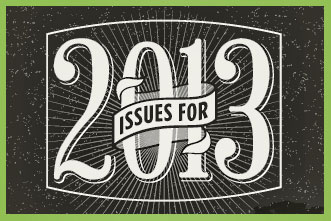As the new year unfolds, it is always a healthy exercise to look ahead to key opportunities and key challenges. Certainly such an effort is in order for congregations in North America. I plan to look at 13 of those issues in this blog.
This extrapolation is not an exercise in keen foresight or extraordinary mental acumen. I am simply looking at current issues that seem to be gaining momentum.
These issues will present themselves unevenly to different churches. But I foresee tens of thousands of American congregations will be impacted by each of them.
I am grateful to Sam Rainer for his recent post, “Looking Ahead to 2013: What Should the Church Expect.” Many of his seminal ideas are captured in these articles. Though I list the issues in numerical order, I am not attempting to assign any degree of importance of one over another.
1. The impact of the “nones.”
The 2012 study by Pew Research rightfully garnered much attention. The percentage of the adult U. S. population that claims no religious affiliation increased from 15 percent in 2007 to 20 percent in 2012. That is an amazing 33 percent increase in that one category in a relatively short period.
One implication for local congregation is the decrease of marginal church attendees, often called “CEO” (Christmas Easter Only) Christians. There is no longer much societal pressure to attend church. Those on the margins are thus falling off completely.
There will continue to be a financial impact since these infrequent attendees typically provided some level of giving to their churches.
2. Migration back to small groups.
For three decades, the key emphasis in American church life has been the corporate worship experience.
Don’t Miss
Though that emphasis is not going away, there is an increasing emphasis on moving people to small groups of all kinds: Sunday schools, home groups, life groups, etc. There is an increasing awareness that those who are in groups have a higher level of commitment in almost all areas of church life.
As the Sunday school movement swept the nation for a half-century through the 1970s, a similar groups movement is already underway and should gain even more momentum.
3. Accelerated closing of churches.
The institutional church stubbornly resists formal closing. Even if only six or seven people attend each week, those few fight for the survival of their church.
Those who were attending these very small churches are either moving to the “nones” category, or they are moving to larger churches. The primary stalwarts to keep the doors open are members of the builder generation, those born before 1946. As that generation decreases at an increasing rate, more churches will close.
Any guess to the number of closings in 2013 is speculation on my part. I wouldn’t be surprised, however, if the numbers reach the 8,000 to 10,000 level.












